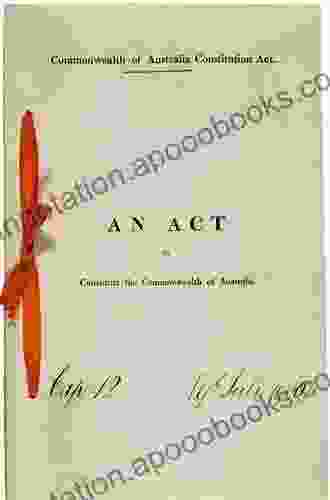History of English Romanticism in the Nineteenth Century: Exploring the Heart of the Romantic Era

The 19th century witnessed an extraordinary outpouring of literary, artistic, and intellectual creativity that would forever shape the cultural landscape of England. This period, known as Romanticism, was a transformative era that ushered in a new way of thinking and feeling about the world, characterized by an emphasis on emotion, imagination, and the individual.
In this comprehensive exploration, we delve into the rich tapestry of English Romanticism, tracing its origins, examining its key themes and influences, and celebrating the iconic figures who shaped its legacy. Through the lives and works of William Wordsworth, Samuel Taylor Coleridge, and Percy Bysshe Shelley, we gain a nuanced understanding of the Romantic sensibility and its profound impact on literature, art, and society.
The seeds of Romanticism were sown in the late 18th century, a time of political upheaval and social change. The Industrial Revolution was rapidly transforming the landscape of England, giving rise to new social classes and economic disparities. This period also saw the rise of the Gothic novel, which explored the darker, more imaginative side of human nature.
4.1 out of 5
| Language | : | English |
| File size | : | 836 KB |
| Text-to-Speech | : | Enabled |
| Screen Reader | : | Supported |
| Enhanced typesetting | : | Enabled |
| Word Wise | : | Enabled |
| Print length | : | 225 pages |
| Lending | : | Enabled |
| Hardcover | : | 242 pages |
| Item Weight | : | 1.14 pounds |
| Dimensions | : | 6.14 x 0.56 x 9.21 inches |
Against this backdrop, a group of young poets began to emerge, disillusioned with the rationalism and scientific emphasis of the Enlightenment. They sought a more emotional and imaginative approach to life, finding inspiration in nature, the individual, and the supernatural.
William Wordsworth is widely regarded as one of the founding fathers of English Romanticism. His poetry celebrates the beauty and power of nature, finding in it a source of solace, inspiration, and spiritual connection. His iconic work, "Lyrical Ballads," co-written with Samuel Taylor Coleridge, marked a turning point in literary history, emphasizing the use of everyday language and the experiences of ordinary people.
In Wordsworth's poetry, nature is not simply a backdrop but an active participant in human life. He believed that through communion with nature, individuals could rediscover their true selves and find a deeper understanding of the world around them.
Samuel Taylor Coleridge was a polymath whose work spanned poetry, philosophy, and literary criticism. His imagination was boundless, and his writings often delved into the realms of the supernatural and the subconscious. His most famous poem, "The Rime of the Ancient Mariner," is a haunting and enigmatic tale that explores themes of guilt, redemption, and the power of imagination.
Coleridge's work is characterized by its rich imagery, evocative language, and profound philosophical insights. He was also a major influence on the development of German Romanticism, particularly through his collaboration with the philosopher Immanuel Kant.
Percy Bysshe Shelley was one of the most radical and passionate figures of the Romantic era. A staunch advocate for social justice and political reform, his poetry is marked by its revolutionary fervor and its celebration of human freedom. His most famous works include "Ozymandias," a scathing indictment of tyranny, and "Hymn to Intellectual Beauty," a paean to the transformative power of love.
Shelley's life was as dramatic as his poetry. He was expelled from Oxford University for atheism, and he spent much of his life in exile due to his political views. His tragic death at the age of 29 only added to his mystique and cemented his status as a Romantic icon.
The Romantic era was characterized by a number of key themes that permeated literature, art, and music. These themes included:
- Emotion and Imagination: Romantics celebrated the power of emotion and imagination, believing that these faculties were essential for a full and meaningful life.
- Nature: Nature was central to Romantic thought, seen as a source of inspiration, beauty, and spiritual connection.
- The Individual: Romantics emphasized the importance of the individual, valuing personal experience and inner feelings over societal norms and conventions.
- The Supernatural: The Romantic fascination with the supernatural manifested itself in literature, art, and music, often exploring themes of mystery, the unknown, and the power of the imagination.
- Social and Political Reform: Many Romantics were deeply concerned with social and political issues, using their art to advocate for change and to critique the injustices of the time.
The impact of English Romanticism was profound and far-reaching. It had a transformative effect on literature, art, and music, inspiring new genres, styles, and ways of thinking about the world. It also left a lasting legacy on Western culture, shaping our understanding of nature, the individual, and the human condition.
In literature, Romanticism gave rise to a new wave of poets, novelists, and essayists, who challenged conventional notions of form and subject matter. The Gothic novel, the historical novel, and the lyrical poem all flourished during this period.
In art, Romanticism led to a new emphasis on emotion and imagination, with artists such as J.M.W. Turner and John Constable creating vibrant and evocative landscapes that captured the power and beauty of the natural world.
In music, Romanticism saw the rise of composers such as Ludwig van Beethoven and Franz Schubert, whose works were characterized by their emotional intensity, sweeping melodies, and use of innovative harmonies.
The history of English Romanticism in the 19th century is a captivating tale of literary, artistic, and intellectual innovation. Through the lives and works of iconic figures like William Wordsworth, Samuel Taylor Coleridge, and Percy Bysshe Shelley, we gain a glimpse into a transformative era that forever changed the cultural landscape of England. The themes, influences, and impact of English Romanticism continue to resonate today, reminding us of the enduring power of emotion, imagination, and the human spirit.
4.1 out of 5
| Language | : | English |
| File size | : | 836 KB |
| Text-to-Speech | : | Enabled |
| Screen Reader | : | Supported |
| Enhanced typesetting | : | Enabled |
| Word Wise | : | Enabled |
| Print length | : | 225 pages |
| Lending | : | Enabled |
| Hardcover | : | 242 pages |
| Item Weight | : | 1.14 pounds |
| Dimensions | : | 6.14 x 0.56 x 9.21 inches |
Do you want to contribute by writing guest posts on this blog?
Please contact us and send us a resume of previous articles that you have written.
 Book
Book Novel
Novel Page
Page Chapter
Chapter Text
Text Story
Story Genre
Genre Reader
Reader Library
Library Paperback
Paperback E-book
E-book Magazine
Magazine Newspaper
Newspaper Paragraph
Paragraph Sentence
Sentence Bookmark
Bookmark Shelf
Shelf Glossary
Glossary Bibliography
Bibliography Foreword
Foreword Preface
Preface Synopsis
Synopsis Annotation
Annotation Footnote
Footnote Manuscript
Manuscript Scroll
Scroll Codex
Codex Tome
Tome Bestseller
Bestseller Classics
Classics Library card
Library card Narrative
Narrative Biography
Biography Autobiography
Autobiography Memoir
Memoir Reference
Reference Encyclopedia
Encyclopedia J Todd Hawkins
J Todd Hawkins John Ellsworth
John Ellsworth Chris Cleave
Chris Cleave Cherie Wood
Cherie Wood Christine Porter
Christine Porter Christopher Kennedy
Christopher Kennedy Kate Atherley
Kate Atherley Cigdem Knebel
Cigdem Knebel Chris Ward
Chris Ward Christopher G Nuttall
Christopher G Nuttall Jim Hargan
Jim Hargan Mel Bond
Mel Bond Clara B Ray
Clara B Ray Robert Clark Young
Robert Clark Young Ramakant Dash
Ramakant Dash M Timothy O Keefe
M Timothy O Keefe Herbert Adams Gibbons
Herbert Adams Gibbons Stephen Rohan
Stephen Rohan Etgar Keret
Etgar Keret Danna G Hallmark
Danna G Hallmark
Light bulbAdvertise smarter! Our strategic ad space ensures maximum exposure. Reserve your spot today!

 Cade SimmonsUnlocking the Secrets of the Australian Constitution: A Comprehensive Guide...
Cade SimmonsUnlocking the Secrets of the Australian Constitution: A Comprehensive Guide... John UpdikeFollow ·14.5k
John UpdikeFollow ·14.5k Jeffrey CoxFollow ·19.3k
Jeffrey CoxFollow ·19.3k Kenzaburō ŌeFollow ·14.3k
Kenzaburō ŌeFollow ·14.3k Forrest ReedFollow ·4.5k
Forrest ReedFollow ·4.5k Fredrick CoxFollow ·16k
Fredrick CoxFollow ·16k Diego BlairFollow ·2.5k
Diego BlairFollow ·2.5k Roald DahlFollow ·4.6k
Roald DahlFollow ·4.6k Troy SimmonsFollow ·17.9k
Troy SimmonsFollow ·17.9k

 Kevin Turner
Kevin TurnerDive into the Enchanting World of "Crazy Like Fox": A...
Prepare yourself for a literary adventure...

 Ralph Waldo Emerson
Ralph Waldo EmersonUnlock the Elegance of Daffodil Lace: An Immersive Guide...
: A Tapestry of Delicate...

 Gerald Parker
Gerald ParkerNever Lose An Argument Again: 20 Powerful Techniques From...
Are you tired of losing...

 Xavier Bell
Xavier BellSeven Animal Insertions Filet Crochet Pattern: Embark on...
Welcome to the captivating...

 Eugene Powell
Eugene PowellMagomago in TDS Magomago 12: An Unforgettable Adventure...
Step into the Enchanting World of...

 Marvin Hayes
Marvin HayesSoft Felting Needle Holder Excellence In Reborn Artistry
Unveiling the Secrets of the...
4.1 out of 5
| Language | : | English |
| File size | : | 836 KB |
| Text-to-Speech | : | Enabled |
| Screen Reader | : | Supported |
| Enhanced typesetting | : | Enabled |
| Word Wise | : | Enabled |
| Print length | : | 225 pages |
| Lending | : | Enabled |
| Hardcover | : | 242 pages |
| Item Weight | : | 1.14 pounds |
| Dimensions | : | 6.14 x 0.56 x 9.21 inches |









